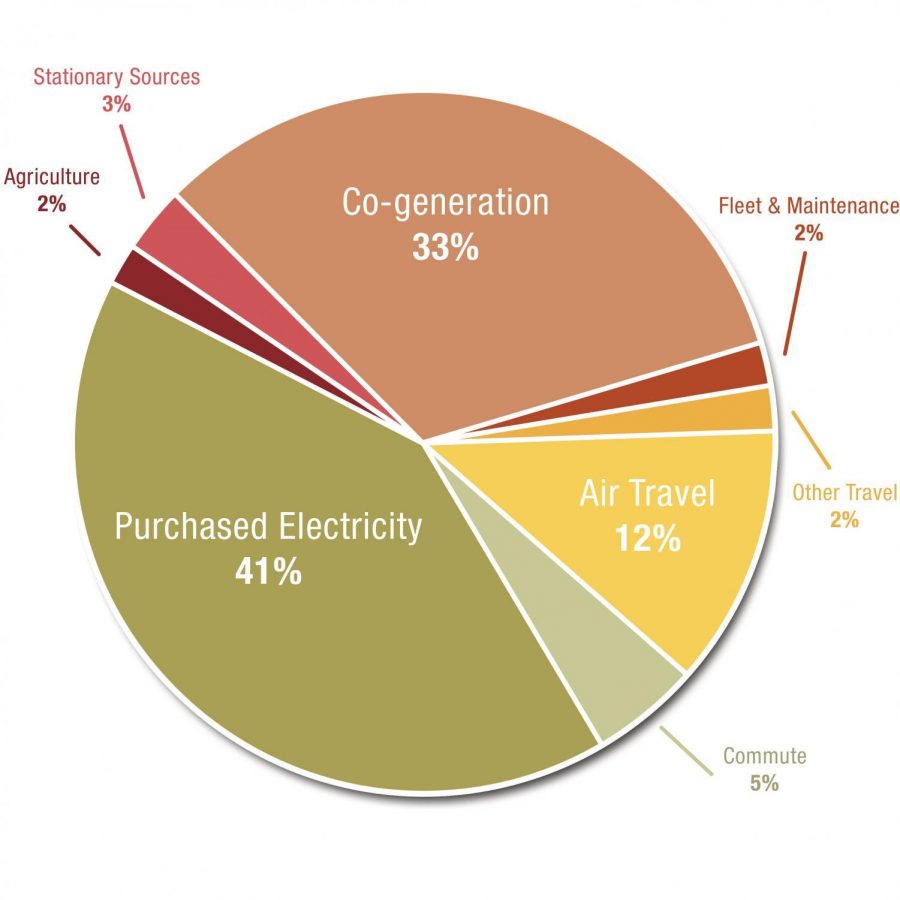Oregon State University plans to be climate neutral by 2025
March 4, 2016
Revising their climate action commitment, OSU plans to offer specific options for individual colleges to implement localized action to reduce greenhouse gas emissions.
According to Brandon Trelstad, OSU sustainability coordinator, this new plan is designed to let each of the different colleges decide how they can implement sustainable practices in their own operations.
In the past, the climate action plan took the form of a single, broader document that sought to implement sustainability across the entire university. The plan first came to be in 2007, when President Ray signed the President’s climate commitment stating that OSU would combat climate change by eliminating the school’s greenhouse gas emissions and become completely climate neutral by the year 2025.
This year, after the Sustainability Office and the OSU Policy Analysis Lab revisited the plan, the idea for a more localized action plan emerged.
“I was at first a little skeptical because that isn’t standard procedure,” Trelstad said. “But that doesn’t mean that it’s not the best procedure.”
This January, Trelstad and his colleagues began meeting with the deans for each of the colleges present on campus to discuss the plan and build connections. According to Trelstad, the responses have so far been mostly supportive.
Right now, they are working to develop the mechanics and options within the plan itself. Specifically, Trelstad hopes to develop a list or “menu,” of sustainable practice options ranging from decreasing paper use to incentivizing the inclusion of sustainability in curriculum to engaging with students. The plan allows each college can select which policies work best for them.
According to Ann Scheerer, advisor for the sustainability double degree and instructor, this new model shifts the focus of the plan to taking more practical steps.
“I definitely think it is a great model for implementation,” Scheerer said.
Scheerer’s past research has focused on climate action plans developed by cities like Portland and New York.
Another critical element to implementing the climate action plan will be involving students.
Carter Frantz-Geddes, energy projects coordinator at the Student Sustainability Initiative, hopes to promote the plan and take the lead student engagement opportunities—in addition to the student engagement options on the sustainability plan “menu.”
Frantz-Geddes plans to work with the division of student affairs to communicate with students and encourage them to get involved in what ways they can.
“We’re making big changes on campus, ” Frantz-Geddes said. “Students care, we hear about it (…) It’s just a matter of if we will devote the time and resources.”
Whether or not the university will maintain the original goal of climate neutrality by 2025 has yet to be determined. This goal will be reexamined and possibly modified along with the rest of the plan, according to Trelstad.
In the meantime, Trelstad and his colleagues hope to complete their “menu,” of options by the end of spring term and continue to make progress and connections across campus.
“Let’s not focus on the plan, let’s focus on the action,” Trelstad said.
To find out more, visit the sustainability office website.















































































































